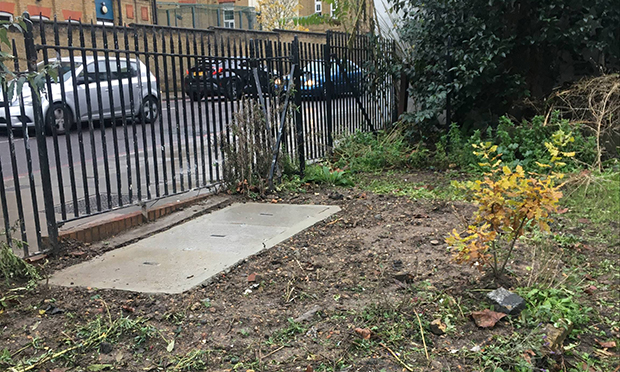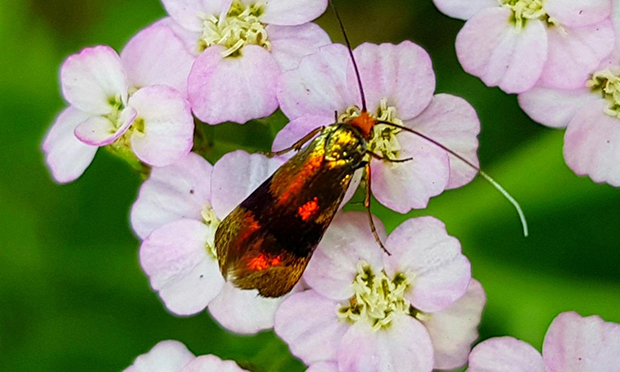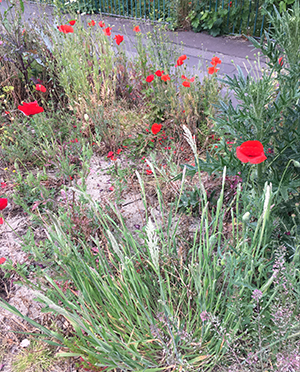The Citizen Gardener: ‘It’s easier to erect a building than plant a tree’

In the words of one of my favourite songs of 2020 by Janelle Monae: “The tables got to turn”.
Monae, in ‘Turntables’, is talking about political and social change, but the same goes for the regulations around and attitudes towards the environment – as well as the way it’s maintained.
Old-fashioned habits prevail but are lagging far behind the public view and experience, which is that nature is good and we need more of it, even if it looks a bit messy. It helps us mentally, physically and even socially, providing relaxing, safe and healthy spaces.
And yet regulations, laws and institutions treat nature as something to be controlled and kept at bay. At the moment, it’s easier to erect a building than plant a tree.
The council website says: “Garages can be built in your garden or on the land around your house without the need to apply for planning permission.” Or, presumably, your neighbours’ approval.
If the council or maintenance people want to take out plants that have been put in and looked after by residents, they don’t need permission. They don’t even have to tell anyone what they are doing.
Over and over, I hear people despair that plants they’ve put in around their streets or on their estate have been sprayed or pulled out without any warning.

Linzell Garden in Homerton is an example. For the last two years or so, local residents and the 10xGreener group have been increasing the amount of plant life in the little park with the support of the tenants and residents association (TRA). We’ve been developing a flower bed and hedging to mitigate the pollution and noise from Homerton Road and Marsh Hill. We have also planted lots of bulbs and allowed wild plants to spread and seed naturally.
It was becoming a rich mixture of wild and cultivated plants which attracted, amongst other things, a rare moth and includes fifty plant varieties. But over a few months on the estate, bushes were ripped out, saplings in the garden strimmed and, a couple of weeks ago, hedging and plants were pulled up or trampled on without warning.
On another estate, just one resident forced the council to cut down a flower meadow. At another, the management organisation, which includes a councillor, claims a resident-run orchard and meadow attracts rats (while ignoring the open bins and takeaways where people drop and throw food) and have demanded that they don’t “keep or create any habitats for bees or other insects or animals”.
In short, it’s easy to get rid of nature. But if someone wants to green up their street or estate – remove a parking space and replace it with a parklet, plant a tree, start a community garden or orchard or install planters, for example – they need to negotiate with and get the support of other residents and go through a labyrinthine process to make a change. Often they come up against intransigent TRAs, complicated requirements or simply don’t know the process.

This means that only the most determined, time-rich people can get through the difficulties of contacting neighbours and negotiating the bureaucracy. It is prejudiced against people who don’t have English as their first language, who are uncomfortable speaking to their neighbours or who might not know the system. It’s also prejudiced against nature.
Surely green should be the default; plants should be allowed to grow unless they are causing harm.
I often say that the best thing we can do for nature is nothing. It will look after itself if it has space to grow and isn’t stopped in its tracks by us.
At this point in the climate and nature emergency we need to weight the norm in favour of nature. The system and attitudes need to be flipped round (the tables got to turn) so that the norm – the default – is that nature can grow.
Why not put a tree in and, as long as it’s safe and can be maintained, keep it there unless there are, say, seven serious objections about harm from immediate neighbours? Allow ‘weeds’ to grow in the street unless they are doing harm? Sow flowers on your estate instead of grass? Plant bulbs in tree pits and know they will be able to grow and flower?
In turn, the council should not spray herbicides unless the plants are doing damage and, if spraying does go ahead, it should publish details of its herbicide programme including any side-effects known to affect people and/or animals. And inform residents if necessary work will involve removing plants.
The precedent for this turnabout is the Low Traffic Neighbourhoods where the council has imposed a greener road system and allowed for the consultation to follow once people have experienced the changes. It can be done a different way. The tables got to turn.
If you want to comment on Hackney’s parks and green spaces strategy, the deadline is 18 January. You can find the consultation at bit.ly/2Xf4RBj.
Also, farewell and good luck to Jon Burke, councillor and champion of the environment in Hackney who recently announced he has stood down from his roles in the borough. We will miss your robust approach to positive environmental change.
Kate Poland is an award-winning community gardener and the UK’s first ever postcode gardener in E5. For more, head to cordwainersgrow.org.uk and friendsoftheearth.uk
